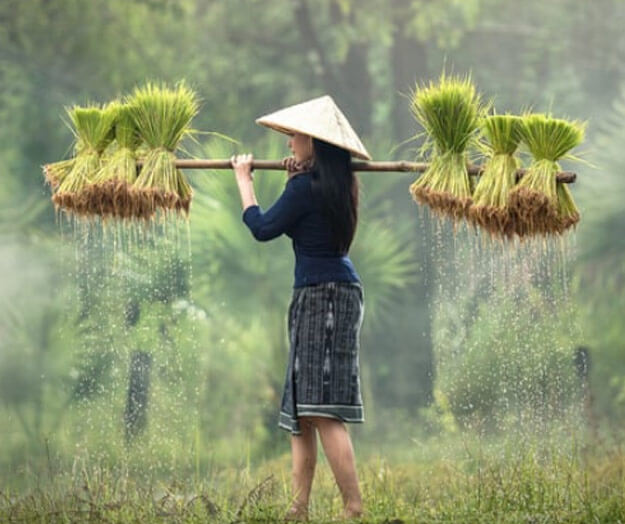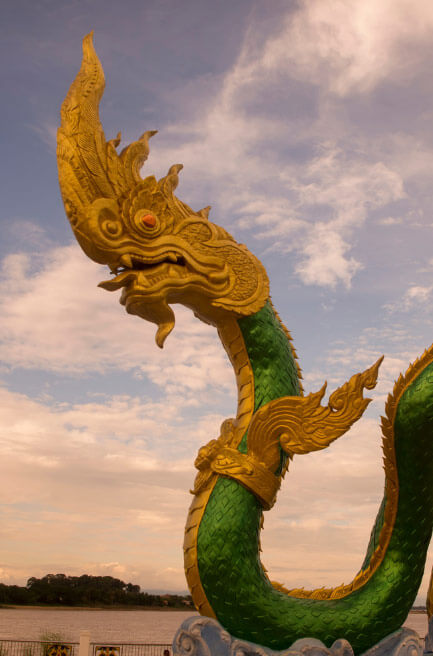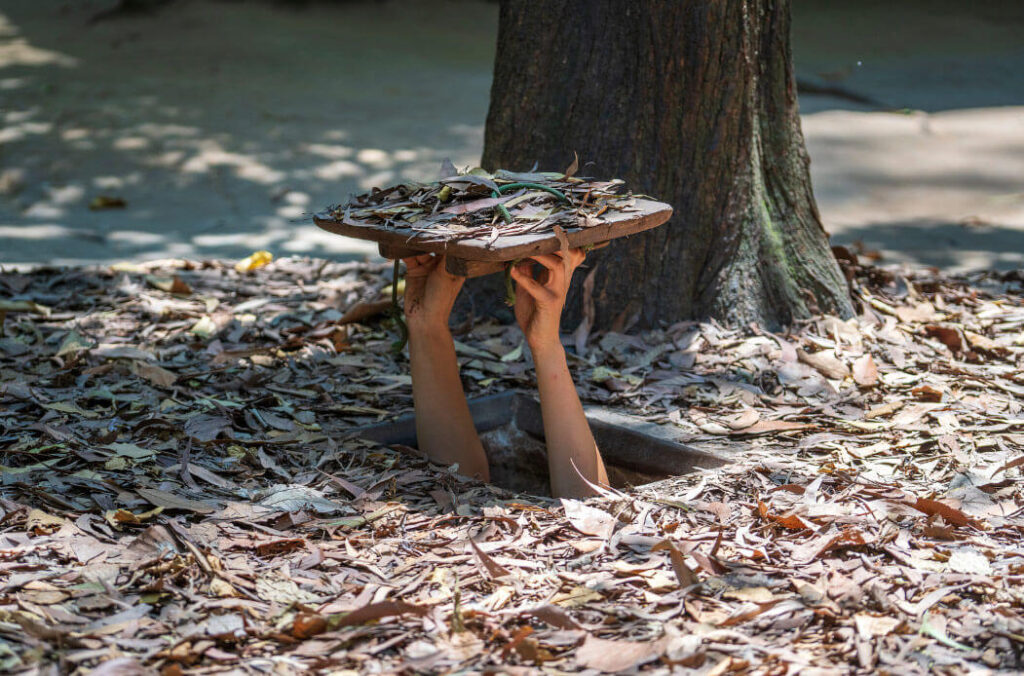Ho Chi Minh City, often referred to as Saigon by locals and the world alike, is a dynamic metropolis that beckons with a unique blend of old-world charm and modern vitality. This sprawling urban wonderland, situated in the heart of southern Vietnam, serves as the nation’s economic, cultural, and historical epicenter. With a history as rich and diverse as its street food offerings, Ho Chi Minh City is a captivating mosaic of tradition, innovation, and an unyielding spirit.
Ho Chi Minh, A City of Many Names
Let’s start with the name – Ho Chi Minh City. Formerly known as Saigon, this city wears its history like a badge of honor. Saigon, the name that still rolls off the tongues of many, is a relic of the French colonial era when wide boulevards and ornate architecture graced its streets. However, in 1976, following the reunification of North and South Vietnam, the city was officially renamed Ho Chi Minh City in honor of the revolutionary leader Ho Chi Minh, who played a pivotal role in the country’s fight for independence from colonial powers.
But don’t let the change in name fool you; Saigon remains a term of endearment and nostalgia for many residents. It’s a name that resonates with the city’s dynamic past and its ongoing transformation into a modern economic powerhouse.
A Melting Pot of Diversity
Ho Chi Minh City is a tapestry of cultures, shaped by waves of migration, both historic and contemporary. At its core, it is a predominantly Vietnamese city, but its streets echo with the voices of myriad ethnic communities, making it a truly cosmopolitan destination.
The Chinese community, known as the Hoa, found its home in the Cho Lon area over a century ago. Today, Cho Lon stands as the largest Hoa community in Vietnam, adding a distinct flavor to the city’s cultural fabric. Each Chinese congregation in Cho Lon commissioned its own places of worship and carved out its commercial niche, with the Cantonese dominating retail and groceries, the Teochew excelling in tea and fish, and the Fukien overseeing rice trade.
The diverse communities that call Ho Chi Minh City home contribute to its vibrant culinary scene, traditional festivals, and vibrant neighborhoods, each with its unique character.
A Journey Through Recent History
The recent history of Ho Chi Minh City is an intricate narrative of resilience, reinvention, and rapid progress. The city bore witness to the tumultuous years of the Vietnam War, and remnants of that era can still be seen in the Reunification Palace, preserved as a poignant museum.
During the mid-20th century, the city was a playground for expatriates, with sassy restaurants, casinos, and opium dens catering to the elite. British author Graham Greene chronicled this hedonistic period in his book “Ways of Escape.” By the 1950s, the city had its share of troubles, with vice industries controlled by the notorious Binh Xuyen gang.
Post-reunification, Ho Chi Minh City faced challenges, with political shifts and economic persecution leading to a significant exodus of the ethnic Chinese population. However, the city’s spirit endured, and its metamorphosis into a thriving and welcoming destination reflects the tenacity of its people.
The Modern Marvel: Ho Chi Minh City Today
Fast forward to the present day, and Ho Chi Minh City stands as a symbol of Vietnam’s remarkable transformation. The city has embraced the free market economy with gusto, propelling itself to the forefront of the nation’s economic landscape. Gleaming skyscrapers now share the skyline with colonial-era buildings, while bustling markets and street vendors continue to thrive.
The entrepreneurial spirit of its residents is evident in the mercantile fervor of Cho Lon’s markets, such as Tran Phu’s An Dong, which has been a bustling hub of commerce since 1991. Yet, for those looking to immerse themselves in history, the ancient Binh Tay Market offers a glimpse into the city’s storied past.
Ho Chi Minh City’s culinary prowess is renowned, with its streets offering a tantalizing array of flavors. Beyond the ubiquitous street food stalls, the city boasts a diverse range of dining options, from traditional Vietnamese eateries to international cuisines like Indian, Italian, and French. Specialties like bánh mì and cơm tấm are essential tasting experiences, showcasing the city’s culinary heritage.
In the realm of nightlife, Ho Chi Minh City comes alive after dark. The city offers a spectrum of entertainment, from chic cocktail lounges to lively street-side bars. Music enthusiasts can find live performances ranging from Filipino bands covering the latest hits to local musicians making their mark in venues like Thi Café and Yoko.
A City of Contrasts and Harmony
Ho Chi Minh City is a city of stark contrasts and remarkable harmony. It juxtaposes its tumultuous history with a thriving present, its colonial architecture with sleek modernity, and its bustling streets with peaceful temples and pagodas. It is a place where tradition and innovation walk hand in hand, where the echoes of the past reverberate in the vibrancy of the present.
As you wander through the labyrinthine streets of Cho Lon, take a motorbike ride through its bustling boulevards, savor its delectable street food, and witness the grandeur of its landmarks, you’ll discover that Ho Chi Minh City is not just a destination; it’s an enchanting story waiting to be written in every step you take and every dish you savor. It’s a city where history lives, the future beckons, and the present thrives in all its exuberant glory.


Must-Visit Attractions
Must-Visit Attractions and Landmarks in Ho Chi Minh City
Ho Chi Minh City, formerly known as Saigon, is a captivating blend of history, culture, and modernity. Its attractions and landmarks offer insights into its rich heritage and vibrant present. Here are some top places to explore:
Saigon Notre Dame Cathedral: A masterpiece of French colonial architecture, this cathedral stands as a symbol of the city’s enduring history. Its two bell towers, each weighing over 28 tons, are made of bricks from Marseille.
Central Post Office: Designed by the famous Gustave Eiffel, this architectural gem is both a functioning post office and a historical monument. Admire the stunning interior with its grand arches and intricate details.
Saigon Opera House: Built in 1897, this elegant theater hosts various cultural performances. Its façade, adorned with ornate sculptures, showcases a blend of European and French influences.
Bến Thành Market: Dive into the heart of local commerce at this bustling market. Explore stalls selling everything from fresh produce and clothing to souvenirs. Don’t miss the opportunity to sample delectable street food here.
Jade Emperor Pagoda: Known locally as “Chùa Phước Hải,” this temple pays homage to the goddess of the sea. Its serene ambiance, intricate wood carvings, and Taoist architecture make it a hidden gem in the city.
Reunification Palace: Once the Presidential Palace of South Vietnam, this historic site offers a glimpse into the country’s tumultuous past. Explore the palace’s well-preserved rooms and underground bunkers.
How to Get To Ho Chi Minh City
Getting to Ho Chi Minh City is the first exciting step of your journey. The city is well-connected by various means of transportation:
Tan Son Nhat International Airport: As the primary gateway, it serves numerous international and domestic flights. The airport is conveniently located near the city center, ensuring a smooth transition to your destination.
By Land: Travelers can access Ho Chi Minh City by bus from neighboring cities and countries. For example, there are comfortable bus services connecting it to Cambodia’s capital, Phnom Penh, making it a convenient choice for cross-border travel.
By Water: Embark on a unique journey by cruise ship along the picturesque Saigon River. Several cruise lines offer sailings that include Ho Chi Minh City as a port of call, allowing travelers to enjoy both the city and the scenic river.
Best Time To Go Ho Chi Minh City
The city’s climate significantly influences the best time to visit, ensuring an enjoyable experience:
Dry Season (December to April): This period offers pleasant temperatures and minimal rainfall, making it ideal for outdoor activities and sightseeing. It’s the peak tourist season when you can explore attractions comfortably.
Wet Season (May to November): While the rainy season brings heavy downpours, it also means fewer crowds and lower hotel prices. Plan indoor activities and keep in mind that flooding can occur during heavy rains.
Best Way To Get Around
Navigating Ho Chi Minh City is an adventure in itself, with numerous transportation options:
Motorbike Taxis (Xe Ôm): Experience the city like a local by hopping on the back of a motorbike taxi. Negotiate fares and zip through traffic to reach your destination.
Taxis: Opt for metered taxis, ensuring the meter is used or agree on a fare beforehand. Taxis are readily available and convenient for getting around.
Cyclos: Explore the city at a leisurely pace in traditional bicycle rickshaws known as cyclos. These provide a unique way to soak in the surroundings while being chauffeured.
Public Buses: Ho Chi Minh City has an extensive bus network, though English signage is limited. It’s a budget-friendly option for travelers seeking an authentic local experience.
Walking: Explore compact neighborhoods like District 1 by foot to immerse yourself in local life. Walking allows you to discover hidden alleys, street food vendors, and vibrant markets.
Off the Beaten Path Hidden Gems
While the city’s main attractions are captivating, hidden gems offer a unique perspective and a chance to escape the crowds:
Thao Dien: Located in District 2, Thao Dien is an expat-friendly district with a laid-back atmosphere. Explore its riverside dining options, eclectic shops, and vibrant community.
Gò Vấp Flower Village: Escape the urban hustle and immerse yourself in lush flower gardens. Visitors can explore the fields and even purchase vibrant bouquets to brighten their day.
Pham Ngu Lao Park: Tucked away in the heart of the city, this park provides a peaceful oasis. It’s an excellent spot for a relaxing stroll, offering a break from the bustling streets.

Local Cuisine / Best Restaurants?
Ho Chi Minh City is renowned for its delectable cuisine, offering a delightful array of dishes that will tantalize your taste buds. Here’s a closer look at these must-try local foods and some recommended dining establishments:
1. Pho:
Pho Hoa Pasteur: Located on Pasteur Street, this restaurant is celebrated for its aromatic beef pho, a flavorful broth simmered to perfection. The tender slices of beef and fresh herbs combine to create a bowl of culinary delight that’s both comforting and authentic.
Pho Phuong: Nestled in District 1, Pho Phuong is a beloved local spot known for its savory beef pho. The broth here is simmered for hours, infusing each spoonful with rich flavors. It’s an excellent place to savor this iconic Vietnamese dish.
2. Bánh Mì:
Banh Mi Huynh Hoa: Situated in District 1, this eatery is renowned for its Banh Mi, a Vietnamese sandwich filled with a medley of ingredients, including crisp vegetables, flavorful meats, and a variety of sauces. The Banh Mi here is packed with flavor and offers a satisfying crunch.
Banh Mi Hong Hoa: Located in the heart of District 3, Banh Mi Hong Hoa is another fantastic spot to relish this Vietnamese sandwich. The combination of freshly baked bread and a delectable mix of fillings makes it a delightful choice.
3. Bánh Xèo:
Banh Xeo An La Ghien: Found in District 10, Banh Xeo An La Ghien is a gem for those seeking the crispy delights of Banh Xeo. These rice pancakes are skillfully prepared, offering a delightful contrast of textures and flavors.
Banh Xeo Muoi Xiem: Located in District 1, this restaurant is celebrated for its savory Banh Xeo. The rice pancakes are generously filled with ingredients like shrimp, pork, and bean sprouts, creating a mouthwatering combination.
4. Cơm Tấm:
Cơm Tấm Ba Ghẹn: Situated in District 1, Cơm Tấm Ba Ghẹn specializes in Cơm Tấm, a Vietnamese broken rice dish. The succulent grilled meats, fragrant rice, and fresh herbs create a harmonious and satisfying meal.
Cơm Tấm Ba Ghẹn: Another branch of this restaurant can be found in District 3, ensuring you have multiple opportunities to indulge in this Vietnamese culinary delight.
5. Bun Thit Nuong:
Bun Thit Nuong Co Thao: Located in District 1, this eatery is celebrated for its Bun Thit Nuong, a dish featuring grilled pork served with vermicelli noodles. The perfectly charred pork is complemented by fresh herbs and a savory sauce, creating a delightful balance of flavors.
Bun Thit Nuong Me Ly: Situated in District 3, Bun Thit Nuong Me Ly is another excellent choice for this dish. The grilled pork is tender and marinated to perfection, making it a popular spot for locals and tourists alike.
6. Seafood:
Oc Dao: Found in District 3, Oc Dao is a seafood lover’s paradise. The menu boasts an array of fresh seafood options, from succulent clams to flavorful crab. Don’t miss the chance to sample some of Vietnam’s finest seafood dishes.
Quan Ut Ut: Located in District 1, Quan Ut Ut is known for its mouthwatering barbecue and seafood options. The lively atmosphere and delicious fare make it an ideal spot to relish a seafood feast.
These culinary experiences offer a glimpse into the rich and diverse food culture of Ho Chi Minh City, making your visit a truly gastronomic adventure.


Activities in Ho Chi Minh City
Ho Chi Minh City offers a wealth of activities to keep you entertained:
Cu Chi Tunnels: Explore the extensive network of tunnels used during the Vietnam War. It’s a historical and educational experience.
Mekong Delta: Take a day trip to the Mekong Delta to explore its floating markets, lush landscapes, and traditional villages.
War Remnants Museum: Gain insights into the Vietnam War’s impact through powerful exhibits and historical artifacts.
Bitexco Financial Tower: Visit the observation deck for panoramic views of the cityscape, especially stunning at sunset.
Water Puppet Show: Enjoy a traditional water puppet performance, a unique art form dating back centuries.
Unique Cultural Experiences
Immerse yourself in the city’s vibrant culture with these experiences:
Traditional Vietnamese Music: Attend a live performance of traditional Vietnamese music, often held in cultural centers and theaters.
Lunar New Year (Tet): If visiting during Tet, witness the city’s colorful celebrations, including dragon dances and fireworks.
Local Markets: Explore local markets like Cho Lon and Binh Tay Market to witness daily life and interact with friendly locals.
Cyclo Tours: Take a cyclo (bicycle rickshaw) tour to navigate the bustling streets while chatting with the cyclo driver.
Language
Local Language of Ho Chi Minh City
While Vietnamese is the official language, English is commonly spoken in tourist areas and by younger generations. Learning a few basic Vietnamese phrases can enhance your experience and interactions with locals.
Here are some tips to help you get started:
Greetings:
- Hello: “Xin chào” (sin chow)
- Goodbye: “Tạm biệt” (tam byet)
- Good morning: “Chào buổi sáng” (chow boy sang)
- Good afternoon: “Chào buổi trưa” (chow boy tru-a)
- Good evening: “Chào buổi tối” (chow boy toy)
Common Courtesies:
- Please: “Làm ơn” (lam un)
- Thank you: “Cảm ơn” (gam un)
- Yes: “Vâng” (vang)
- No: “Không” (khom)
- Excuse me / Sorry: “Xin lỗi” (sin loy)
Basic Phrases:
- I don’t understand: “Tôi không hiểu” (toy khom hee-yoo)
- How much is this?: “Bao nhiêu tiền?” (bao nyoo tee-en)
- Where is…?: “Ở đâu…?” (o dau)
- Help: “Giúp đỡ” (jyup doh)
- I need…: “Tôi cần…” (toy kun)
Numbers:
- 1: “Một” (mowt)
- 2: “Hai” (high)
- 3: “Ba” (bah)
- 4: “Bốn” (bon)
- 5: “Năm” (nahm)
- 10: “Mười” (moo-ee)
Dining Phrases:
- Menu: “Thực đơn” (tooc don)
- Water: “Nước” (nuoc)
- Delicious: “Ngon” (ngon)
- Bill, please: “Tính tiền, làm ơn” (teeng tee-en, lam un)
Shopping Phrases:
- How much is this?: “Cái này bao nhiêu tiền?” (kai nyay bao nyoo tee-en)
- Can you give a discount?: “Có thể giảm giá không?” (koh tay jyam jah khom)
- I’d like to buy this: “Tôi muốn mua cái này” (toy mwan moo-ah kai nyay)
Navigational Phrases:
- Where is…?: “Ở đâu…?” (o dau)
- Left: “Bên trái” (ben trai)
- Right: “Bên phải” (ben fai)
- Straight ahead: “Thẳng” (tang)
Emergency Phrases:
- Help: “Giúp đỡ” (jyup doh)
- Police: “Cảnh sát” (kang sat)
- Hospital: “Bệnh viện” (benh vyen)
Remember, the Vietnamese people appreciate it when tourists make an effort to speak their language. Even if your pronunciation isn’t perfect, your attempts to communicate in Vietnamese will likely be met with smiles and appreciation. Enjoy your time in Ho Chi Minh City!
Accommodation in Ho Chi Minh City
Accommodation in Ho Chi Minh
Let’s delve deeper into the accommodation options in Ho Chi Minh City:
Luxury Accommodation:
Caravelle Saigon: As one of the city’s most iconic luxury hotels, the Caravelle Saigon stands as a testament to both its history and modern opulence. Located in District 1, it offers not only sumptuous rooms and suites but also breathtaking views of the Saigon River. The hotel’s historic significance dates back to the Vietnam War when it was a hub for journalists. Today, it houses multiple dining venues, including the renowned rooftop Saigon Saigon Bar, where you can enjoy panoramic city views.
The Reverie Saigon: For the ultimate indulgence, The Reverie Saigon is unparalleled. This hotel is synonymous with luxury, boasting lavish decor and an impressive art collection throughout its premises. Each room and suite is a masterpiece of design and comfort. The Reverie also hosts several world-class dining options, such as R&J Italian Lounge & Restaurant and The Royal Pavilion for exquisite Cantonese cuisine.
Boutique Accommodation:
Villa Song Saigon: Nestled on the banks of the Saigon River, Villa Song Saigon is a hidden gem. This boutique hotel offers a tranquil oasis away from the city’s hustle and bustle. The rooms are elegantly designed, and many feature river views. The Bistro Song Vie restaurant is a delightful place to savor Vietnamese and international dishes while enjoying the serene atmosphere.
The Myst Dong Khoi: Located on the historic Dong Khoi Street, The Myst combines the charm of French colonial architecture with contemporary artistry. The hotel’s unique facade, adorned with hanging gardens, is an attraction in itself. Inside, you’ll find rooms and suites adorned with modern decor and amenities. The highlight is the rooftop bar, offering panoramic views of the city.
Budget Accommodation:
- Pham Ngu Lao Area: Pham Ngu Lao is a bustling area in District 1, known for its budget-friendly accommodations. Travelers on a shoestring budget will find numerous guesthouses and hostels here. Places like “Pham Ngu Lao Street” and “Saigon Backpackers Hostel” offer affordable lodging options. This area is perfect for backpackers and those seeking a lively atmosphere with plenty of street food stalls and nightlife.
Serviced Apartments:
- Somerset Ho Chi Minh City: For travelers planning an extended stay, Somerset Ho Chi Minh City is an excellent choice. These serviced apartments provide a home-away-from-home experience. You’ll have well-equipped kitchens, spacious living areas, and the convenience of laundry facilities. The location is also convenient, with easy access to the city’s attractions and business districts.
Whether you’re seeking historical luxury, artistic boutique charm, budget-friendly lodging, or the comforts of a serviced apartment, Ho Chi Minh City offers a wide array of accommodation options to suit every traveler’s needs. The city’s diverse neighborhoods and districts ensure that you can find the perfect place to stay while exploring its rich culture and vibrant streets.
Ha Long Bay Vietnam
How's the weather in Ho Chi Minh City?
Ho Chi Minh City experiences a tropical climate with distinct wet and dry seasons:
Dry Season (December to April): Expect warm and dry weather with occasional cooler evenings, ideal for outdoor activities.
Wet Season (May to November): Rainfall increases during these months, with occasional flooding. It’s advisable to plan indoor activities and be prepared for rain.
Recommended Itinerary
1 Week in Ho Chi Minh City
Here’s a sample itinerary for a week-long trip to Ho Chi Minh City:
Day 1 – Explore District 1’s Landmarks: Begin your adventure by immersing yourself in the heart of Ho Chi Minh City. District 1 is home to some of the city’s most iconic landmarks:
Notre Dame Cathedral: Start your day with a visit to this stunning example of French colonial architecture. Marvel at the twin spires and striking red brickwork.
Central Post Office: Just a short walk from the cathedral, explore this grand post office designed by Gustave Eiffel. Admire its intricate architectural details and send a postcard home.
Saigon Opera House: Your cultural journey continues with a visit to the Saigon Opera House. Check the schedule for any performances or events during your stay.
Day 2 – Cu Chi Tunnels: Delve into Vietnam’s wartime history with a trip to the Cu Chi Tunnels:
- Cu Chi Tunnels: These underground tunnels played a significant role during the Vietnam War. Explore the network, learn about guerrilla warfare tactics, and even crawl through some tunnels if you dare.
Day 3 – Mekong Delta Day Trip: Escape the city for a day to discover the enchanting Mekong Delta:
- Mekong Delta: Embark on a guided tour to experience the vibrant culture of the delta. Cruise along the winding waterways, visit local villages, and savor traditional cuisine.
Day 4 – Cho Lon and Binh Tay Market: Explore the bustling Chinatown district:
Cho Lon: Begin your day in Cho Lon, which translates to “Big Market.” This historic district is known for its vibrant atmosphere and rich Chinese heritage.
Binh Tay Market: Located in the heart of Cho Lon, Binh Tay Market is a sprawling marketplace where you can shop for souvenirs, spices, and other local goods.
Day 5 – War Remnants Museum and Bitexco Financial Tower: Dive deeper into Vietnam’s history and enjoy panoramic views:
War Remnants Museum: Gain a deeper understanding of the Vietnam War through powerful exhibits, photographs, and artifacts.
Bitexco Financial Tower: Head to the Bitexco Financial Tower for stunning views of the city. Visit the Saigon Skydeck and experience the thrill of standing on a glass skywalk.
Day 6 – Water Puppet Show and Vietnamese Culture: Immerse yourself in traditional Vietnamese arts and culture:
Water Puppet Show: Attend a water puppet performance, a unique and centuries-old art form. Enjoy stories and music performed by skilled puppeteers on a water stage.
Cultural Experiences: Explore local culture further by visiting art galleries, attending traditional music performances, or even trying your hand at making Vietnamese dishes in a cooking class.
Day 7 – Street Food and Vibrant Nightlife: End your week on a high note by savoring local cuisine and experiencing the city’s nightlife:
Street Food Adventure: Ho Chi Minh City is renowned for its street food. Wander through districts like District 4 or District 5 to sample delicious dishes like pho, banh mi, and seafood.
Motorbike Tour: To experience the city’s vibrant nightlife like a local, consider joining a motorbike tour. Cruise through the bustling streets, stopping at popular local spots and enjoying the lively atmosphere.
This itinerary provides a balanced mix of historical exploration, cultural experiences, and culinary delights. Ho Chi Minh City offers a rich tapestry of attractions and activities that will make your week-long visit truly memorable.

